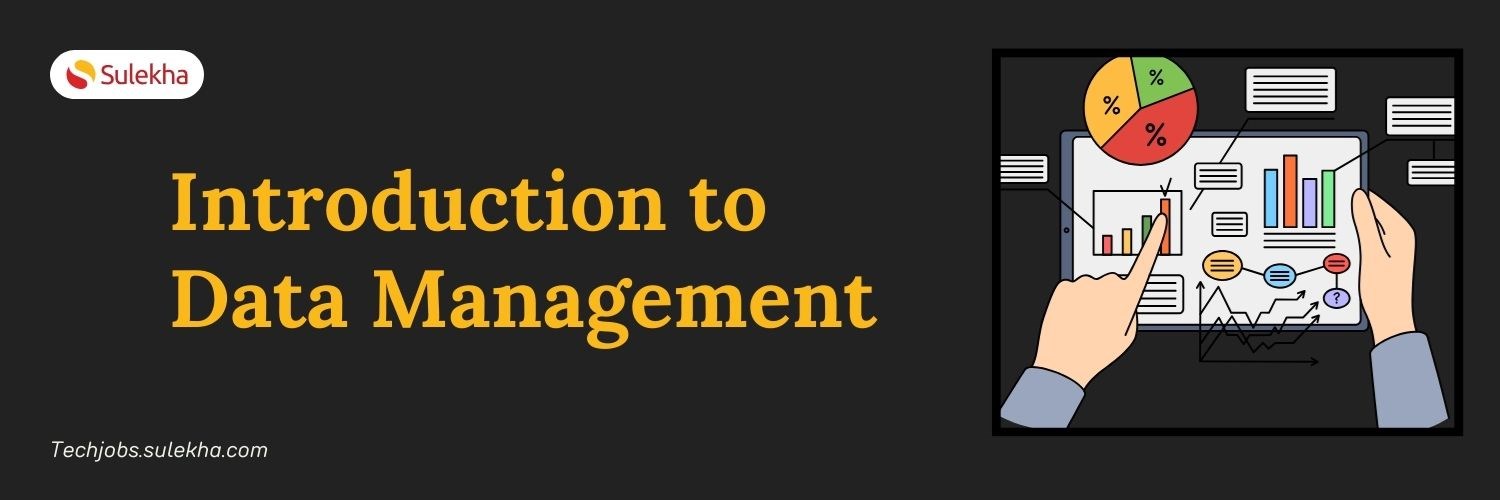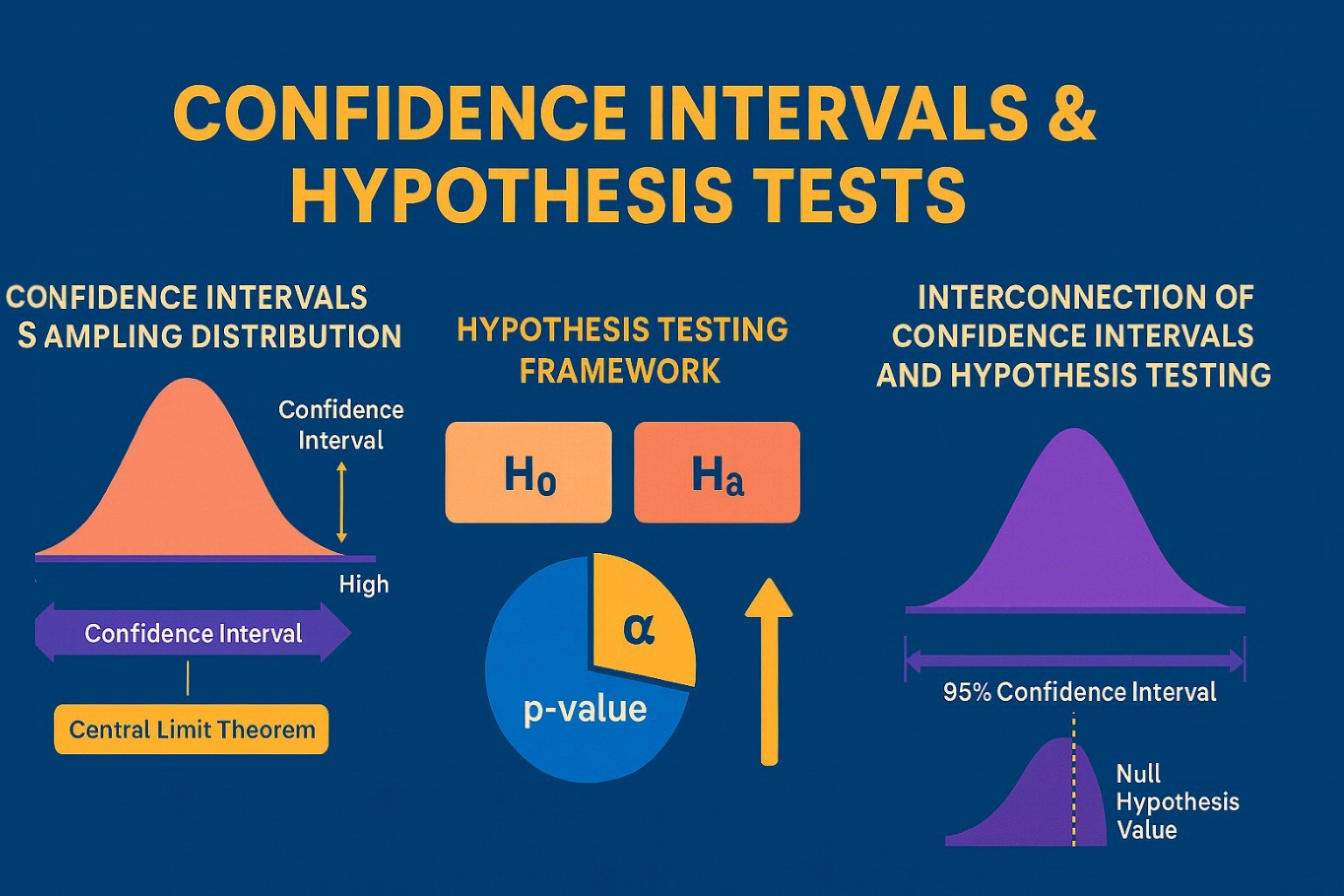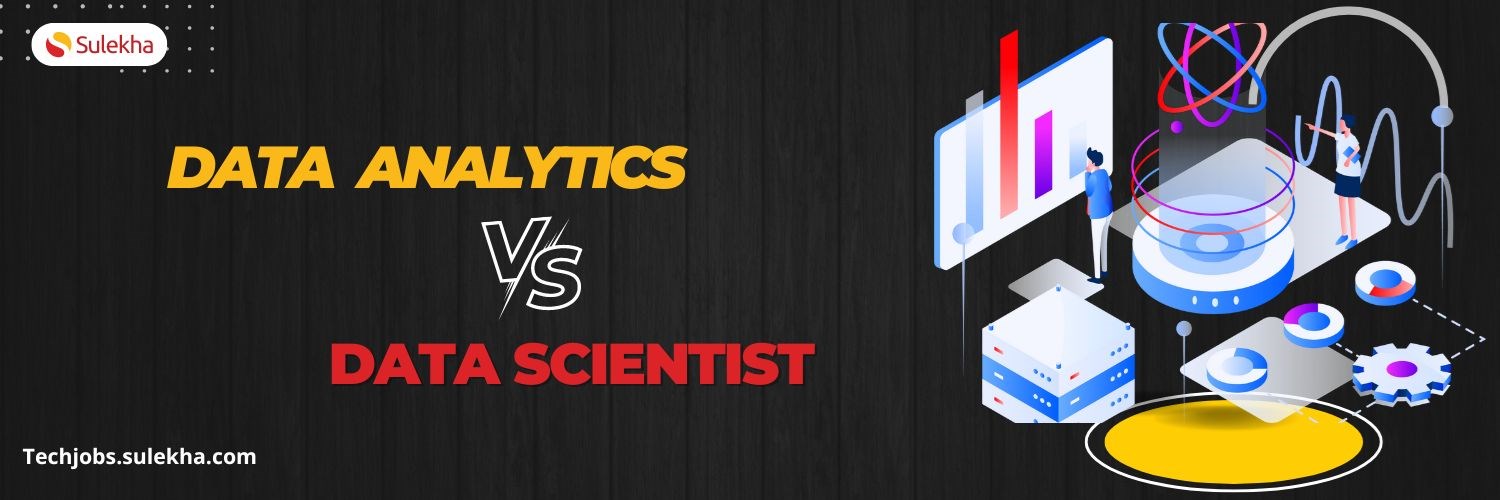What is data management?

Data is an assortment of basic information, like figures, facts, etc., that can be used explicitly. The primary observations and information can be words, numbers, descriptions, pictures, figures, etc. When the data is organized to make sense, it is called information.
The meaningful data should be stored securely. Data management is the practice of collecting, retaining, and securing the data for usage in a cost-effective manner.
Data management process
Data management is a systematic process of handling data. A well-defined data architecture can act as a blueprint for the database. After defining the architecture, the responsibilities should be well-defined. A lack of clearly defined roles leads to poor data quality. Proper nomenclature helps store, retrieve, and use data for future use. Then, the data has to be prepared and processed, which helps analyze and interpret. The entire data management process should be documented.
What are the various types of data management?
Data governance: Data governance is the core aspect of data management strategy. It is a set of processes and procedures that manage the usability, availability, security, and integrity of data. A data governance mechanism helps prioritize and enforce data policies. The data governance policies are safeguarded and monitored by the chief data officer, data governance managers, Data governance committee/council, and other data professionals.
Data security: Data security is the procedure of shielding of digital data from unlawful access, theft, damage, or alteration. It covers software, hardware, storage devices, and any device where the organization's internal and external data is saved and stored. Data protection methods can include data encryption, access control, data backup, and data recovery, to name a few. Other security measures include software, hardware, and legal security.
Data integration: Data integration is a process that brings data from various sources together to provide a unified view. It is a process of harmonizing data into a coherent format that can be used for enterprise analysis, operational, and decision-making purposes. Data integration avoids silos by gathering data from various cloud sources, spreadsheets, databases, apps, etc., and decision-makers can easily access data to make informed decisions.
Data modeling: Data modeling visually represents data with software techniques and their interrelationships. The data is expressed through text and symbols. The data model provides a blueprint for a database or the upgrade of a legacy application. There are several data modeling
Techniques: The IT industry widely uses the relational model, hierarchal model, network model, conceptual model, logical data model, physical data model, and entity-data model.
Data storage: Data storage is the safe and secure storage of digital data for future use. The storage systems can be electronic, magnetic, or optical. There are two types of data storage: direct-attached storage (hard drives, flash drives, CD/DVD) and network-attached storage (cloud storage).
Data warehouses: A data warehouse, or an enterprise data warehouse, helps to report and analyze structured and semi-structured data received by enterprises from multiple sources. It is a centralized archive for vast amounts of historical data.
Database management: Database management is concerned with organizing and managing the data in a structured manner. A database management system is software that organizes a database in a structured way. The data organization uses tables, reports, schema, views, etc. Database management is also concerned with data storage, retrieval, and manipulation.
Master data management (MDM): MDM is a technology-based discipline in which IT and the business work together and become accountable for enterprise data.
Data analysis: Data analysis, which uses statistical techniques to help businesses make informed decisions, involves structured and classified data. There are four types of data analysis: descriptive, prescriptive, predictive, and exploratory.
Conclusion:
Today's organizations are data-dependent, and a course in Data management will help you secure your organization's digital assets and become its most valued human asset. We can help you become important in your company by offering an introduction to data management course. Please enroll in the Introduction to Data Management course for a prospective career.
Find a course provider to learn Data Science
Java training | J2EE training | J2EE Jboss training | Apache JMeter trainingTake the next step towards your professional goals in Data Science
Don't hesitate to talk with our course advisor right now
Receive a call
Contact NowMake a call
+1-732-338-7323Take our FREE Skill Assessment Test to discover your strengths and earn a certificate upon completion.
Enroll for the next batch
Data Science-Python-ML-AI-Deep Learning (Hands-on Training)
- Dec 15 2025
- Online
Data Science-Python-ML-AI-Deep Learning (Hands-on Training)
- Dec 16 2025
- Online
Data Science-Python-ML-AI-Deep Learning (Hands-on Training)
- Dec 17 2025
- Online
Data Science-Python-ML-AI-Deep Learning (Hands-on Training)
- Dec 18 2025
- Online
Data Science-Python-ML-AI-Deep Learning (Hands-on Training)
- Dec 19 2025
- Online
Related blogs on Data Science to learn more

Confidence Intervals & Hypothesis Tests: The Data Science Path to Generalization
Learn how confidence intervals and hypothesis tests turn sample data into reliable population insights in data science. Understand CLT, p-values, and significance to generalize results, quantify uncertainty, and make evidence-based decisions.

Why Pursue Data Science Training?
Empower your career in a data-driven world. Learn why data science training is crucial for high-demand jobs, informed decisions, and staying ahead with essential skills.

Overview of data analytics VS data scientist
"Discover the key differences between data analytics and data science, explore top courses, job roles, salary expectations, and essential tools to build a successful career in these fields."

Career Launchpad: Data Science vs. Data Analytics- Know which course is right for you
Discover the key differences between Data Science and Data Analytics to choose the right course for your career. Explore roles, curriculum, salaries, and future prospects in this comprehensive guide.

What are Algorithms?
Discover the fundamentals of algorithms and data structures, their characteristics, types, and their crucial role in problem-solving and programming efficiency.

TEN ENTRY LEVEL JOBS IN IT FOR FRESHERS
Explore ten entry-level IT jobs for freshers, including roles like Help Desk Technician and Cloud Engineer, that require no prior experience but foundational IT knowledge. Discover exciting career paths in the technology sector that offer growth and

What is statistics?
Discover the basics of statistics, including its major types—descriptive and inferential—and their importance in data analysis and prediction.

Twelve High Paying Jobs in New York City
Uncover twelve high-paying jobs in New York City, including roles like data scientist and public relations manager. Learn about their responsibilities and salary ranges.

What is Linear Algebra?
Discover the importance of linear algebra in various fields like data science, economics, and medicine. Understand its applications and why it's an essential skill for students and professionals alike.

TEN ENTRY LEVEL JOBS IN IT FOR FRESHERS
Discover ten entry-level IT jobs perfect for freshers, offering exciting career opportunities and a pathway to success in the tech industry.
Latest blogs on technology to explore

From Student to AI Pro: What Does Prompt Engineering Entail and How Do You Start?
Explore the growing field of prompt engineering, a vital skill for AI enthusiasts. Learn how to craft optimized prompts for tools like ChatGPT and Gemini, and discover the career opportunities and skills needed to succeed in this fast-evolving indust

How Security Classification Guides Strengthen Data Protection in Modern Cybersecurity
A Security Classification Guide (SCG) defines data protection standards, ensuring sensitive information is handled securely across all levels. By outlining confidentiality, access controls, and declassification procedures, SCGs strengthen cybersecuri

Artificial Intelligence – A Growing Field of Study for Modern Learners
Artificial Intelligence is becoming a top study choice due to high job demand and future scope. This blog explains key subjects, career opportunities, and a simple AI study roadmap to help beginners start learning and build a strong career in the AI

Java in 2026: Why This ‘Old’ Language Is Still Your Golden Ticket to a Tech Career (And Where to Learn It!
Think Java is old news? Think again! 90% of Fortune 500 companies (yes, including Google, Amazon, and Netflix) run on Java (Oracle, 2025). From Android apps to banking systems, Java is the backbone of tech—and Sulekha IT Services is your fast track t

From Student to AI Pro: What Does Prompt Engineering Entail and How Do You Start?
Learn what prompt engineering is, why it matters, and how students and professionals can start mastering AI tools like ChatGPT, Gemini, and Copilot.

Cyber Security in 2025: The Golden Ticket to a Future-Proof Career
Cyber security jobs are growing 35% faster than any other tech field (U.S. Bureau of Labor Statistics, 2024)—and the average salary is $100,000+ per year! In a world where data breaches cost businesses $4.45 million on average (IBM, 2024), cyber secu

SAP SD in 2025: Your Ticket to a High-Flying IT Career
In the fast-paced world of IT and enterprise software, SAP SD (Sales and Distribution) is the secret sauce that keeps businesses running smoothly. Whether it’s managing customer orders, pricing, shipping, or billing, SAP SD is the backbone of sales o

SAP FICO in 2025: Salary, Jobs & How to Get Certified
AP FICO professionals earn $90,000–$130,000/year in the USA and Canada—and demand is skyrocketing! If you’re eyeing a future-proof IT career, SAP FICO (Financial Accounting & Controlling) is your golden ticket. But where do you start? Sulekha IT Serv

Train Like an AI Engineer: The Smartest Career Move You’ll Make This Year!
Why AI Engineering Is the Hottest Skillset Right Now From self-driving cars to chatbots that sound eerily human, Artificial Intelligence is no longer science fiction — it’s the backbone of modern tech. And guess what? Companies across the USA and Can

Confidence Intervals & Hypothesis Tests: The Data Science Path to Generalization
Learn how confidence intervals and hypothesis tests turn sample data into reliable population insights in data science. Understand CLT, p-values, and significance to generalize results, quantify uncertainty, and make evidence-based decisions.